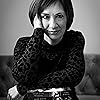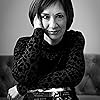Jane Davis
asked
Jane Davis:
Your favourite description of fiction is that it is "made-up truth". How right you are! What would be your answer to the inevitable question: "How much of your writing is autobiographical?"
Jane Davis
Although it may only be an emotion, it’s inevitable that something of me ends up in each of my books. If I need to write a tired and emotional scene, I might set the alarm for the middle of the night.
While I was writing “Half-truths and White Lies”, my middle school was pulled down to make way for a housing estate. Since it was within walking distance of my job, I made a pilgrimage every lunchtime to see the wrecking balls do their work, documenting the progress with photographs. In the evenings, writing as Peter Church, I described the dismay he felt at discovering that a block of flats had been built on the place where he used to play marbles and that more blocks had been built on pitch where he played football. He asks himself the question, is it possible to mourn the loss of a building as you would a person? “Or is it simply that St Winifred’s was the shell that I stored so many of my memories in? How is it that my old school was torn apart and I didn’t feel a physical wrench?”
In “A Funeral for an Owl”, Jim discovers that his pupil Shamayal is living in the council flat that he had lived in as a boy. I knew that flat because I lived there too and so some of the small anecdotes are things that happened to me.
I wrote “An Unknown Woman” in a year when my income had dropped to a level that I hadn’t earned since the late eighties, and so I chose to explore our relationship with material possessions. I also wanted to write about a character who is like me, but is not me. A woman in her late forties who has chosen not to have children and is living with a long-term partner, but is unmarried. Although she’s happy in her relationship, there is a nagging sense of alienation that she doesn’t like to acknowledge, sometimes from her friends whose time and energy is taken up with young children, sometimes from the life she imagined for herself when she played Mummies and Daddies, and was bridesmaid at an aunt’s wedding. In many ways, her life lacks milestones. Measures of success and achievements. And so she has ploughed everything into her relationship, her work - which she loves - and her home. And then her home and everything in it are taken away from her. In the first scene, Anita is standing outside her home watching as it burns to the ground. The house is recognisably mine. If you set out to write something that is authentic and true, you have to make it personal.
While I was writing “Half-truths and White Lies”, my middle school was pulled down to make way for a housing estate. Since it was within walking distance of my job, I made a pilgrimage every lunchtime to see the wrecking balls do their work, documenting the progress with photographs. In the evenings, writing as Peter Church, I described the dismay he felt at discovering that a block of flats had been built on the place where he used to play marbles and that more blocks had been built on pitch where he played football. He asks himself the question, is it possible to mourn the loss of a building as you would a person? “Or is it simply that St Winifred’s was the shell that I stored so many of my memories in? How is it that my old school was torn apart and I didn’t feel a physical wrench?”
In “A Funeral for an Owl”, Jim discovers that his pupil Shamayal is living in the council flat that he had lived in as a boy. I knew that flat because I lived there too and so some of the small anecdotes are things that happened to me.
I wrote “An Unknown Woman” in a year when my income had dropped to a level that I hadn’t earned since the late eighties, and so I chose to explore our relationship with material possessions. I also wanted to write about a character who is like me, but is not me. A woman in her late forties who has chosen not to have children and is living with a long-term partner, but is unmarried. Although she’s happy in her relationship, there is a nagging sense of alienation that she doesn’t like to acknowledge, sometimes from her friends whose time and energy is taken up with young children, sometimes from the life she imagined for herself when she played Mummies and Daddies, and was bridesmaid at an aunt’s wedding. In many ways, her life lacks milestones. Measures of success and achievements. And so she has ploughed everything into her relationship, her work - which she loves - and her home. And then her home and everything in it are taken away from her. In the first scene, Anita is standing outside her home watching as it burns to the ground. The house is recognisably mine. If you set out to write something that is authentic and true, you have to make it personal.
More Answered Questions
About Goodreads Q&A
Ask and answer questions about books!
You can pose questions to the Goodreads community with Reader Q&A, or ask your favorite author a question with Ask the Author.
See Featured Authors Answering Questions
Learn more



